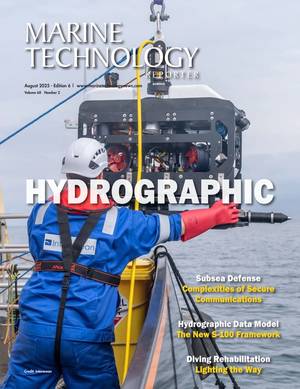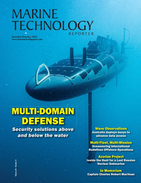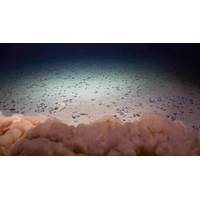
Deep-sea Mining Threatens “Twilight Zone” Ecosystem
all zooplankton and 60% of micronekton, which feed on zooplankton, would be impacted by the discharge of the mining waste, which could ultimately impact predators higher up on the food web.“When the waste released by mining activity enters the ocean, it creates water as murky as the mud-filled Mississippi River. The pervasive particles dilute the nutritious, natural food particles usually consumed by tiny, drifting zooplankton,” said Michael Dowd, lead author of the study and oceanography graduate student in the UH Mānoa School of Ocean and Earth Science and Technology (SOEST).“Micronekton

Gulf Blue Navigator Program Now Accepting Applications for Cohort 4
The University of Southern Mississippi’s (USM) Gulf Blue Navigator Program is now accepting applications for Cohort 4, which begins in January 2026. This four-month accelerator is designed to help post-pilot, blue-tech startups scale their technologies by connecting them with key partners across government, industry, and academia.Unlike traditional startup accelerators, the Gulf Blue Navigator takes a hands-on approach to foster collaboration among federal and state agencies, research institutions, and private industry. Participants gain access to state-of-the-art research facilities, wet-labs
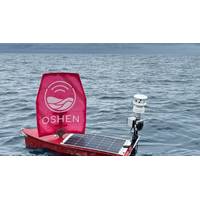
Mini USV Collects Data in a Category 5 Hurricane
A small, wind–powered uncrewed surface vehicle (USV) captured and transmitted data from inside a Category 5 hurricane on September 28, as part of research by NOAA, the United Kingdom-based robotics company, Oshen, and the University of Southern Mississippi (USM).NOAA has teamed up with Oshen and USM to operate seven USVs called C-Stars to gather weather data from the surface of the ocean during the 2025 hurricane season.During Hurricane Humberto, one of the C-Stars became the smallest USV to gather data from the eyewall of the Category 5 hurricane. Two other C-Stars penetrated Hurricane Humberto

NOAA and Partners Deploy C-Star USVs to Collect Hurricane Data
NOAA, in partnership with The University of Southern Mississippi and with the robotics company Oshen, launched five small uncrewed surface vehicles (USVs) called C-Stars in the waters off the U.S. Virgin Islands on August 31st to collect critical data to better understand hurricane development and activity. The deployment is the latest effort by NOAA to advance data collection to improve hurricane research and forecasting.Two additional C-Stars will be stored in Gulfport, Mississippi, and will be ready for launch ahead of actively developing storms in the Gulf this fall.“Understanding weather

Saildrone: USVs Have Only Scratched the Surface of Maritime Security
of unscrewed surface vehicles (USVs), is redefining how oceans are explored, monitored and protected.At the helm is Brian Connon, vice president of ocean mapping and a former U.S. Navy oceanographer. After leaving the Navy, Connon joined a hydrographic research center at the University of Southern Mississippi, which lead to his role at Saildrone. Now, four and a half years in, Connon has helped establish and scale up the company's ocean mapping capabilities.Saildrone sets the standardIn just over a decade, Saildrone has logged more than two million nautical miles and 50,000 days at sea, from the
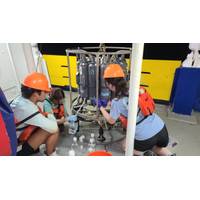
NOAA, Partners to Announce Findings From 2025 Gulf of America "Dead Zone" Monitoring
the record-setting 8,776 square-mile dead zone observed in 2017.During the teleconference, speakers will discuss factors influencing this year’s zone size, potential impacts to living marine resources, the accuracy of the spring hypoxia forecast, and ongoing federal and state initiatives in the Mississippi River watershed focused on reducing nutrient runoff into the Gulf.Speakers will include:Cassandra Glaspie, Associate Professor, Louisiana State University; Chief scientist of survey cruiseSean Corson, Director, NOAA’s National Centers for Coastal Ocean ScienceGretchen Oelsner, Hydrologist
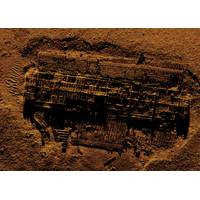
Kraken Robotics Banks $3m in SAS Sales
new orders totaling more than $3 million for Kraken Synthetic Aperture Sonar (SAS). The Kraken SAS systems will be integrated on small and medium-class uncrewed underwater vehicles (UUVs) for clients in Asia Pacific, Europe, and North America.One of the orders is for the University of Southern Mississippi’s Roger F. Wicker Center for Ocean Enterprise, which will be outfitting a variety of autonomous underwater vehicles (AUVs) and autonomous surface vessels (ASVs) with Kraken SAS to support research, development, testing, and evaluation activities.Kraken SAS integrates the capability to perform
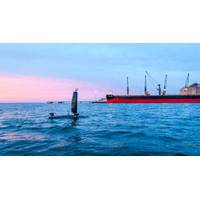
Ocean Aero to Continuously Monitor the Port of Gulfport Autonomously
in the aftermath of severe weather events. Ensuring the channel and harbor is clear for ship traffic is critical to the rapid reopening of a port following a hurricane.A key aspect of the initiative, according to Kelly Lucas, Vice President for Research at the University of Southern Mississippi, is leveraging data analysis and prediction, which USM plans to provide. “Small, nearly imperceptible changes can accumulate over time, evolving into significant issues that impact port operations. By identifying these subtle shifts early on through patterns found in the data, we can
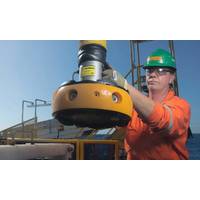
TGS Kicks Off New Multi-Client OBN Project in Gulf of America
, a global provider of energy data and intelligence, has launched a new multi-client ultra long offset ocean bottom node (OBN) data acquisition campaign in the Gulf of America.The Amendment 4 project will expand node coverage in TGS' multi-client library, adding over 1,100 square kilometers in the Mississippi Canyon, Ewing Banks, and Grand Isle South areas.The project will feature TGS' Gemini enhanced frequency source, offering lower frequency and improved signal-to-noise for ultra-long offset OBN seismic compared to conventional seismic sources.This advanced frequency source will enhance input
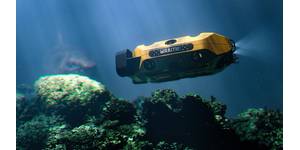
 August 2025
August 2025
